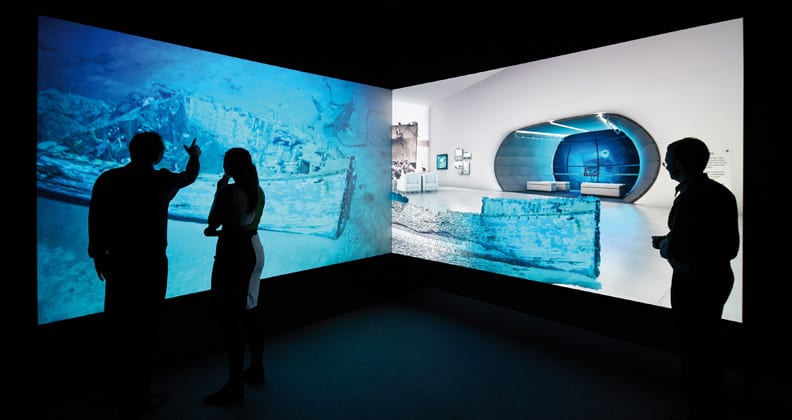Western Australian visualisation, virtualisation and simulation researchers now have a new facility to meet their growing demands, with the opening of Curtin University’s Hub for Immersive Visualisation and eResearch (HIVE).
Professor Graeme Wright, Deputy Vice-Chancellor Research and Development, Curtin University, explained that the HIVE was designed to create new knowledge from the enrichment of research data, enable better and more efficient training environments, and facilitate new modes of creative expression.
“The new facility is operated by the Faculty of Humanities and allows for multidisciplinary research from all schools and faculties from across the University; from Science and Engineering to Humanities, Health Sciences and Business, creating opportunities for collaborative projects,” Professor Wright said.
Launched by Dr Remo Burkhard, Managing Director of the Singapore-ETH Centre, guests at the event were able to tour the new facility and experience the technology.
Each of the four large-scale visualisation systems in the HIVE has unique characteristics to suit particular types of content:
- The Tiled Display suits the presentation of very high-resolution images, including multi-megapixel mosaics or even gigapixel-sized panoramas. It comprises 12 full-HD LCD panels, creating an ultra-large display surface of 24 megapixels over a 10 square metre area.
- The Cylinder is designed for the presentation of immersive stereoscopic panoramas, virtual environments and performance art. This three-metre high, eight-metre diameter, 180-degree cylindrical projection surface is filled by three high-end projectors that are warped and blended to provide a continuous display surface of about five megapixels. This system is fitted with an optical tracking system and content can be displayed in stereoscopic 3D, using supplied 3D glasses.
- The Wedge comprises two rear-projected, 3.8 metre diagonal display surfaces mounted in either a 90-degree wedge configuration or a double-wide flat screen. This system also supports stereoscopic 3D content and provides the best support for scientific 3D volume visualisation, 3D virtual environments and 3D video content.
- The Dome provides an immersive experience via the four-metre diameter domed screen that entirely fills the observer’s primary and peripheral vision. The dome can be used to explore 360-degree ultra-realistic panoramas, omnidirectional video and virtual worlds. It has many potential uses, including virtual tourism.
A range of visualisation software and imaging hardware is available for users to access with the displays and the HIVE includes highly skilled technical support. Video conferencing is also available.
“In addition to research projects, the HIVE will seek to develop strong partnerships and alliances for teaching, training and community outreach activities,” Professor Wright said.



